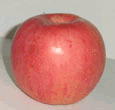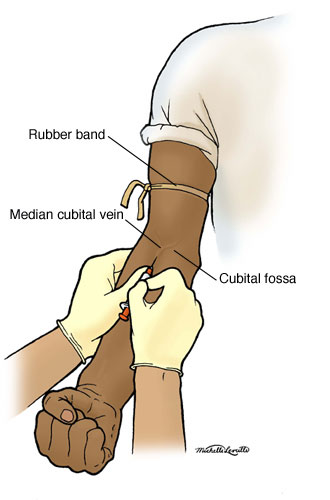9 Daftar Makanan Sehat Untuk Penderita Diabetes
9 Daftar Makanan Sehat Untuk Penderita Diabetes, Setiap manusia pasti membutuhkan makanan guna untuk mempertahankan kelangsunan hidup, namun bagi penderita diabetes tentunya tidak bebas memilih makanan sesuka mengapa, perlu anda ketahuai bahwa ada beberapa jenis makanan yang tidak cocok dan kurang sehat dikomsumsi bagi penderita diabetes. Adapun Jenis makanan yang tidak diperbolehkan dimakan oleh penderita diabetes, seperti Mie, Pasta, Nasi, makanan
Dan minuman yang mengandung Kafein, Kentang, Roti White dan berbagai jenis makanan lainnya yang banyak mengandung karbohidrat atau lebih dikenal dalam dunia medis indeks glikemik yang tinggi. Namun anda penderita diabetes jangan berkecil hati, bukannya penderita diabetes tidak dapat mengkomsumsi makanan yang mengandung zat karbohidrat tinggi tetapi hendaknya padai-pandi dalam memilih makanan yang kadar karbohidratnya rendah. Bagi anda penderita diabetes berikut hasbihtc mencoba berikan daftar makanan sehat penderita diabetes.
Pakar Nutrisi diabetes telah menganjurkan penderita memakan makanan yang kaya akan nutrisi sehat, yaitu serat, omega tiga, kalsium, dan vitamin D. Berikut ada 8 jenis makanan sehat untuk pengidap diabetes :
1. Kacang Kenari
Satu ons kacang kenari atau sekitar tujuh biji mengandung dua gram serat dan dua koma enam gram ALA. Tapi, jumlah tersebut juga menyumbangkan 185 kalori. Jadi, perhatikan jumlah asupan jika Anda sedang mempertahankan berat badan.
Satu ons kacang kenari atau sekitar tujuh biji mengandung dua gram serat dan dua koma enam gram ALA. Tapi, jumlah tersebut juga menyumbangkan 185 kalori. Jadi, perhatikan jumlah asupan jika Anda sedang mempertahankan berat badan.

2. Kacang polong
Kacang polong kaya akan kandungan serat, Serat merupakan komponen tumbuhan yang membuat Anda kenyang, menstabilkan kadar gula darah, dan bahkan menurunkan kolesterol. Setengah cangkir kacang hitam mengandung sekitar tujuh gram serat. Selain itu, kacang polong juga mengandung kalsium, mineral yang terbukti membantu membakar lemak tubuh. Setengah cangkir mengandung sekitar 100 gram kalsium, sekitar 10 persen dari asupan harian.
Kacang polong kaya akan kandungan serat, Serat merupakan komponen tumbuhan yang membuat Anda kenyang, menstabilkan kadar gula darah, dan bahkan menurunkan kolesterol. Setengah cangkir kacang hitam mengandung sekitar tujuh gram serat. Selain itu, kacang polong juga mengandung kalsium, mineral yang terbukti membantu membakar lemak tubuh. Setengah cangkir mengandung sekitar 100 gram kalsium, sekitar 10 persen dari asupan harian.

3. Cokelat Hitam
Cokelat Hitam atau Dark chocolate Jenis Cokelat ini kaya antioksidan flavonoid, yang berfungsi memperbaiki kadar kolesterol baik dan jahat serta mengurangi tekanan darah.
Cokelat Hitam atau Dark chocolate Jenis Cokelat ini kaya antioksidan flavonoid, yang berfungsi memperbaiki kadar kolesterol baik dan jahat serta mengurangi tekanan darah.

4. Produk Susu Olahan
Jenis Susu ada begitu banya seperti susu, keju dan yogurt, kaya kalsium dan vitamin D. Sebuah studi, seperti dikutip situs perevention, menemukan, perempuan yang mengonsumsi lebih dari 1.200 mg kalsium atau lebih dari 800 internasional unit vitamin D sehari berisiko 33 persen lebih rendah menderita diabetes dibandingkan mereka yang mengonsumsi kedua nutrisi ini dalam jumlah kurang. Tapi, pastikan memilih produk susu yang rendah atau bebas lemak.
Jenis Susu ada begitu banya seperti susu, keju dan yogurt, kaya kalsium dan vitamin D. Sebuah studi, seperti dikutip situs perevention, menemukan, perempuan yang mengonsumsi lebih dari 1.200 mg kalsium atau lebih dari 800 internasional unit vitamin D sehari berisiko 33 persen lebih rendah menderita diabetes dibandingkan mereka yang mengonsumsi kedua nutrisi ini dalam jumlah kurang. Tapi, pastikan memilih produk susu yang rendah atau bebas lemak.

5. Ikan Salmon
Salmon kaya asam lemak omega tiga, dengan Tiga ons salmon menyediakan sekitar 1.800 mg omega tiga Jenis lemak sehat ini berfungsi mengurangi risiko penyakit jantung, menurunkan berat badan, mengurangi peradangan, serta memperbaiki resistensi insulin. Selain itu, ikan salmon juga mengandung vitamin D.
Salmon kaya asam lemak omega tiga, dengan Tiga ons salmon menyediakan sekitar 1.800 mg omega tiga Jenis lemak sehat ini berfungsi mengurangi risiko penyakit jantung, menurunkan berat badan, mengurangi peradangan, serta memperbaiki resistensi insulin. Selain itu, ikan salmon juga mengandung vitamin D.

6. Ikan Tuna
Jenis Ikan Laut ini merupakan jenis ikan sehat dan juga kaya asam lemak omega Tiga. adapun resep bagi penderita diabetes adalah komsumsilah Ikan tuna kira-kira Tiga ons karena dengan menu 3 ons ikan tuna mengandung 1.300 mg omega tiga dan sejumlah vitamin D.
Jenis Ikan Laut ini merupakan jenis ikan sehat dan juga kaya asam lemak omega Tiga. adapun resep bagi penderita diabetes adalah komsumsilah Ikan tuna kira-kira Tiga ons karena dengan menu 3 ons ikan tuna mengandung 1.300 mg omega tiga dan sejumlah vitamin D.

7. Oats Kaya Serat
Para praktisi medis dan ahli gizi mendorong pasien diabetes dan jantung untuk mengonsumsi oatmeal, terutama karena khasiatnya dalam membantu menjaga kadar kolesterol dan gula darah tetap normal. Selain kandungan serat yang tinggi, oatmeal juga menyediakan magnesium, protein, fosfor dan vitamin B1, yang berperan penting dalam memproduksi energi. setengah cangkir oat instan menyumbangkan empat gram serat.
Para praktisi medis dan ahli gizi mendorong pasien diabetes dan jantung untuk mengonsumsi oatmeal, terutama karena khasiatnya dalam membantu menjaga kadar kolesterol dan gula darah tetap normal. Selain kandungan serat yang tinggi, oatmeal juga menyediakan magnesium, protein, fosfor dan vitamin B1, yang berperan penting dalam memproduksi energi. setengah cangkir oat instan menyumbangkan empat gram serat.

8. Biji rami
Biji rami kaya akan serat dan alpha-linolenic acid, yang akan diubah tubuh menjadi omega-3 EPA dan DHA. Beberapa studi besar telah menemukan hubungan antara peningkatan asupan dan penurunan kejadian penyakit jantung, serangan jantung, serta gangguan kardiovaskular lainnya. Biji berukuran kecil ini juga dinyatakan bisa menurunkan kadar kolesterol dan gula darah.
Biji rami kaya akan serat dan alpha-linolenic acid, yang akan diubah tubuh menjadi omega-3 EPA dan DHA. Beberapa studi besar telah menemukan hubungan antara peningkatan asupan dan penurunan kejadian penyakit jantung, serangan jantung, serta gangguan kardiovaskular lainnya. Biji berukuran kecil ini juga dinyatakan bisa menurunkan kadar kolesterol dan gula darah.

9. Selai kacang
Beberapa studi telah menyatakan bahwa selai kacang bisa mengurangi risiko diabetes. Kandungan serat di dalamnya dua sendok makan mengandung dua gram serat turut berperan dalam penurunan risiko ini. Selain itu, selai kacang juga mengandung lemak tunggal tidak jenuh yang baik untuk jantung. Tapi, makanan ini juga kaya kalori. Karena itu, perhatikan takaran asupan Anda.
Beberapa studi telah menyatakan bahwa selai kacang bisa mengurangi risiko diabetes. Kandungan serat di dalamnya dua sendok makan mengandung dua gram serat turut berperan dalam penurunan risiko ini. Selain itu, selai kacang juga mengandung lemak tunggal tidak jenuh yang baik untuk jantung. Tapi, makanan ini juga kaya kalori. Karena itu, perhatikan takaran asupan Anda.

referensi
http://www.hasbihtc.com/9-daftar-makanan-sehat-untuk-penderita-diabetes.html






















